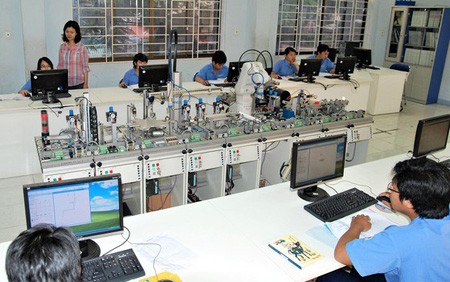
Thanks to the united management for vocational training since the previous year, capital uses, comprehensive planning, and learner routing have seen promising improvement regarding policy democracy and technology implementation. In particular, the use of information technology in admission tasks and the Internet in management tasks have made it more convenient to link schools, learners, and businesses.
Meanwhile, the establishment of job skill councils in various local areas also aid the vocational schools there maintain correct training direction to satisfy businesses sited in those places. This, in turn, forms a stronger relationship between educational institutes and companies.
The Prime Minister has just decided to establish an evaluation board of the planning task for a vocational training network in the period from 2021-2030, with a vision to 2050. This is a novel approach to policy making since there is no longer dependency on a single team in the Directorate of Vocational Education and Training.
This action allows other ministries such as the Ministry of Planning and Investment, the Ministry of Finance, the Ministry of Natural Resources and Environment, and the Ministry of Education and Training to voice their opinions. It is expected that a variety of ideas and experience will help create a more precise planning of national human resources, a more feasible solution for student routing after junior high school, and a more balanced educational-leveled mechanism.
Small- and middle-scaled businesses which require simple-skilled workers still account for a large proportion in Vietnam. Therefore, in the current educational-leveled mechanism, there is a vast majority of low-skilled workers while the proportion of people receiving vocational training is rather modest. This is a great challenge to our country in its strategy for economic development.
Vocational education needs to have a more detailed vision on human resources need until 2030 in order for concerning state agencies to create a synchronous plan for the whole educational system, including primary, secondary, vocational, and tertiary levels.
This important plan should be then customized in accordance with specific characteristics of each local area. There must be a harmonious development between public and private schools, between tertiary education in more developed regions and vocational training in less developed ones. New community colleges are encouraged to be built in places that have sufficient conditions.
Simultaneously, autonomy in vocational institutes should be promoted to make them more active and confident in modernization and standardization processes to answer the demands of the labor market.
It is also essential to improve the image of vocational training to attract more young people who do not wish to pursue higher education.
These must not be deemed as the task of the Directorate of Vocational Education and Training only, but the responsibility of the whole society.
The 2019 Education Law, which will be effective as of July 1, 2020, clearly states that vocational schools are allowed to teach academic subjects besides training job skills. Hence, a detailed syllabus integrating these two aspects should be prepared as soon as possible, along with proper teacher training. Policies to ensure vocational training quality and standards should also be introduced timely.






















